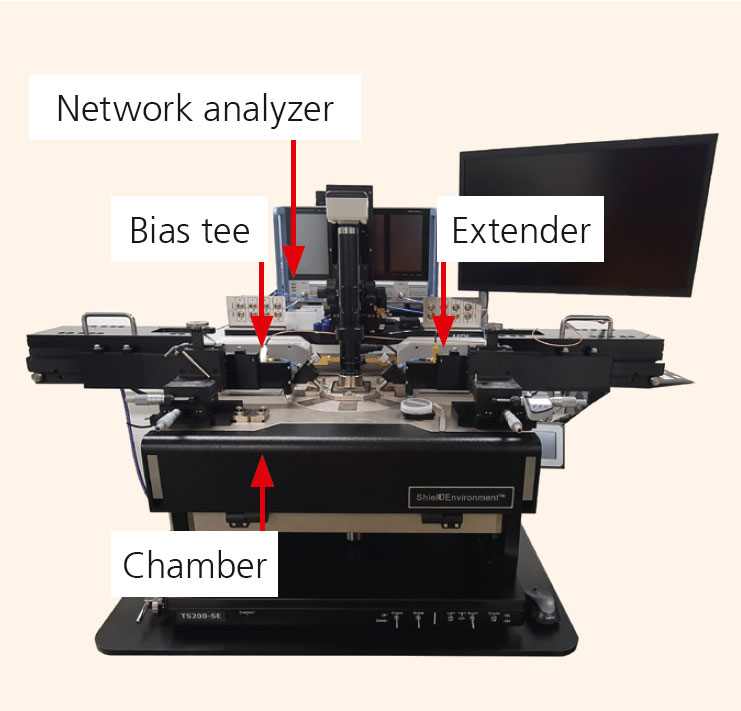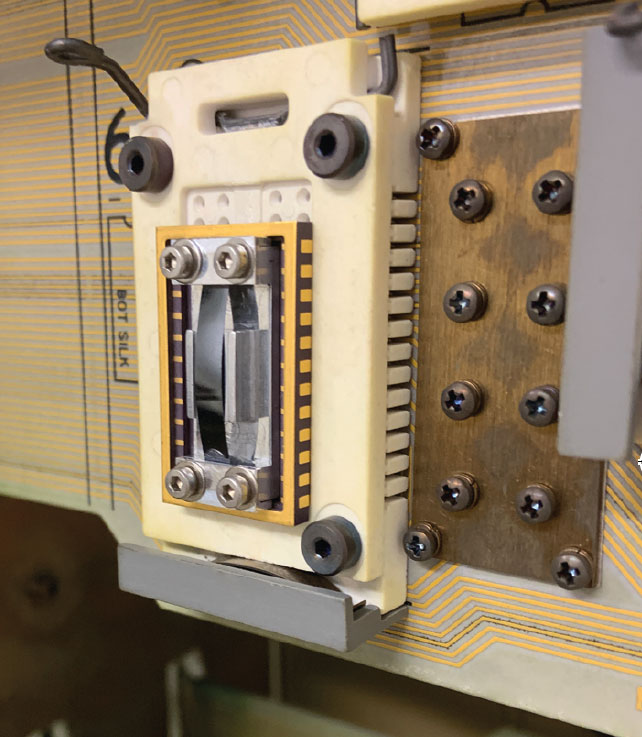
Reliable electronic circuit backends for automotive radar applications
Current research



The number of radar sensors in automobiles – not least because they are needed for autonomous driving capabilities – is increasing continuously. Therefore, the respective electronics in automobiles must be able to cope with high frequencies. The ARAMID project aims to qualify a semiconductor technology developed by GlobalFoundries for automobile radar applications. For this purpose, Fraunhofer IKTS is developing specific reliability tests for testing on-chip interconnects in the wiring layer (back end of line, BEoL) of semiconductor components.
Electromigration as the basis of reliability testing
Reliability testing of the BEoL in microelectronics typically consists of testing the behavior of electromigration (EM) and time-dependent dielectric breakdown (TDDB). The work in the ARAMID project focused on EM. EM is a transport process of metal ions in conductors. This process takes place at high current densities (~10 mA/μm²), which typically occur in on-chip conductors of microprocessors. The resulting pores (voids) can lead to the conductive path failing through interruption or short-circuiting. Standard EM behavior is tested with DC current, accelerated through elevated temperature and current. To qualify the technology for radar applications, the influence of radio frequency (RF) signals must be investigated additionally. For this purpose, an RF measuring station was set up (top figure). The measuring station consists of a wafer prober with hot plate, a network analyzer, and a combined source and measuring unit (SMU) for current measurement including superposition with DC voltage. Frequencies up to 90 GHz and a temperature up to 300 °C can be achieved with this setup.
Evaluation of the experimental setup showed that for the temperatures, currents and time ranges used, no differences were initially observed between RF and non-RF. As expected, no resistance changes due to potential EM degradation occurred during the experimental period, which was comparatively shorter than typical long-term EM processes. That is why currents and temperatures are currently being increased.
Thermomechanical-electrical experiments
Mechanical stress is another factor influencing EM. It is increasing as more and more power electronics in automotive technology operate at a temperature of up to 250 °C and new usage behavior (car sharing) with more frequent starts and stops leads to a higher number of temperature cycles, which generate mechanical stresses and lead to material fatigue. Therefore, special bending stations (bottom image) are used at Fraunhofer IKTS to investigate how mechanical stresses affect EM behavior. In addition, material fatigue is tested in thermomechanical-electrical experiments under cyclic temperature loading in a climatic chamber.
These investigations contribute to increasing the service life of future microelectronic components for automotive technology and thus also to greater safety and sustainability. They also form the basis for further orders from the field of reliability for automotive electronics.
Supported by


